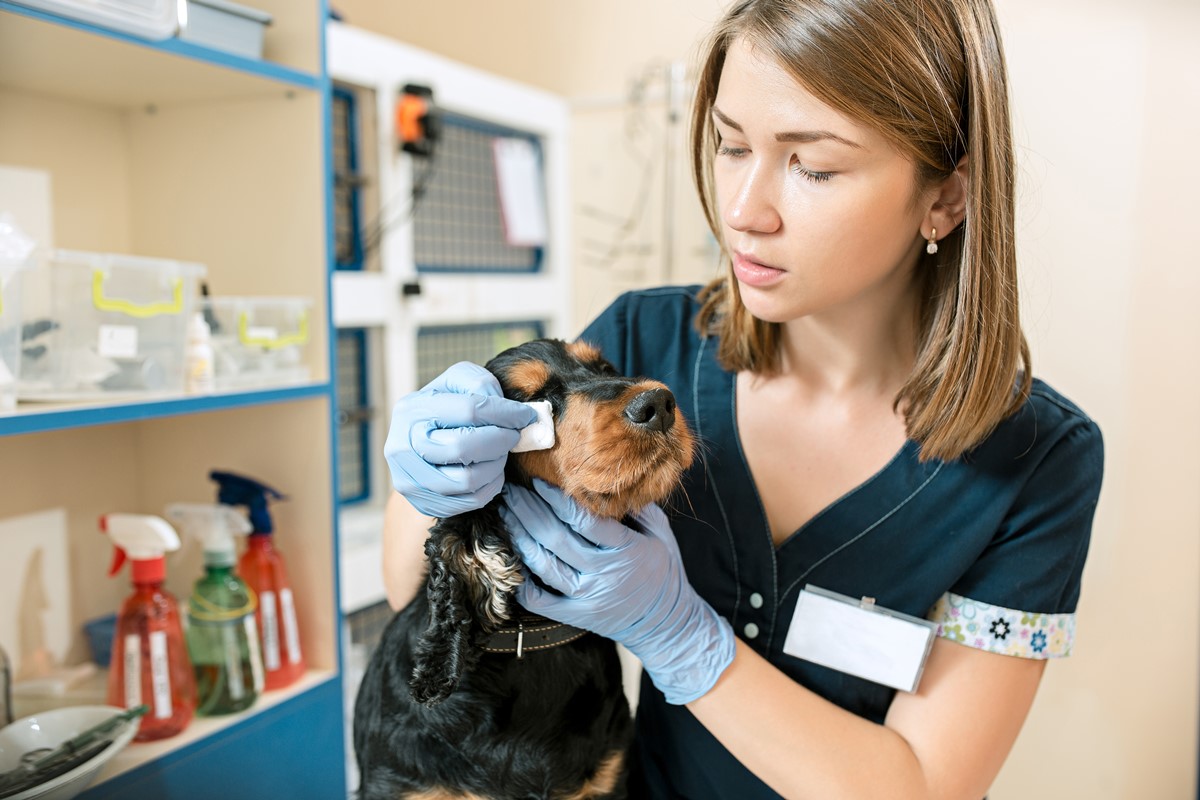What Is Canine Cushing's Disease?
Cushing's disease is a condition that causes the overproduction of the stress hormone cortisol. The more common form, pituitary dependent hypercortisolism, is caused by a non-cancerous tumor of the pituitary gland in the brain and is responsible for over 90 percent of all cases. Cushing's disease can also result from a tumor (sometimes cancerous) of an adrenal gland, in which case it is called adrenal dependent Cushing’s disease. The mechanism by which these two forms trigger increased cortisol production is different, but the end result is the same.

How Do I Recognize Cushing's Disease In My Dog?
- Cushing's disease leads to excessive thirst, so you may notice that your dog drinks a lot and asks to be taken outside to relieve herself more often, especially at night.
- Loss of muscle mass is another symptom of Cushing's disease.
- Over time, your dog grows weaker.
- You may notice that your dog's fur is becoming less thick, as Cushing's disease can lead to hair loss.
- Some dogs with Cushing's disease develop a pot belly.
- In some cases, the tumor itself grows large enough to affect vision and walking. Seizures may also occur.
Though as many as 100,000 dogs are diagnosed with the condition in the United States alone on an annual basis, it is important to be aware that symptoms take time to set in after the disease begins. The symptoms are not the same in all dogs, and they may first be non-specific enough for you to fail to recognize them. You could also simply misinterpret the symptoms of Cushing's disease as a natural part of your dog's aging process, since dogs are usually older than eight years when they're first diagnosed.
This is why it's important to report any unusual changes in your dog's appearance to their vet, and to take them for annual checkups if you can.
What Are The Risk Factors For Canine Cushing's Disease?
Certain dog breeds have a higher risk of developing Cushing's disease:
- Beagles
- Poodles
- Dachshunds
- Boxers
- Boston Terriers
In addition, the medications prednisone, dexamethasone, and steroidal ear drops can lead to the development of Cushing's Disease in dogs.
What If I Suspect Cushing's, Or My Vet Does?
Diagnosing Cushing's disease is quite a process, involving a variety of blood and urine tests, and sometimes an ultrasound in an attempt to physically locate the tumor.
Pituitary-dependent Cushings is usually treated with medications that target the adrenal cortex, though surgery may also be an option, while adrenal-dependent Cushing's requires surgery, in part because these tumors are often cancerous as well.
The average life expectancy of dogs newly diagnosed with Cushing's disease is two years, though some survive longer, and the life expectancy of your dog depends on the treatment you choose as well. Remember that the condition is typically diagnosed in older dogs, however. Some of the diagnosed dogs who die within two years die from age-related causes. Should your younger dog be diagnosed with Cushing's disease and receive appropriate treatment and care, they may live a lot longer.















